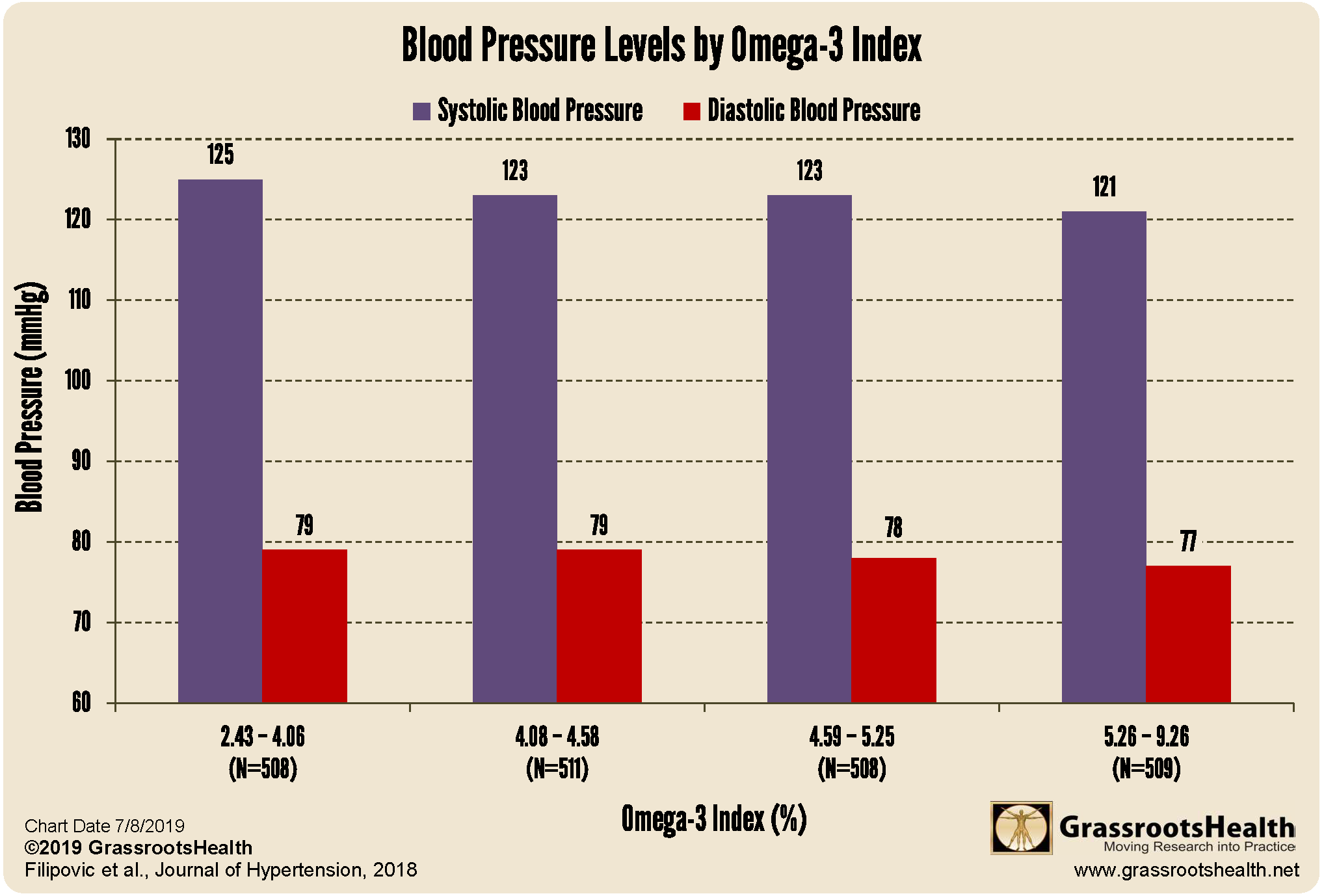Published on July 31, 2019
 The American Heart Association estimates that approximately half of all adults in the United States have high blood pressure. In a previous post, we discussed the average blood pressure levels reported by GrassrootsHealth participants. Nearly 40% of participants who knew their blood pressure reported having a normal blood pressure level, on average.
The American Heart Association estimates that approximately half of all adults in the United States have high blood pressure. In a previous post, we discussed the average blood pressure levels reported by GrassrootsHealth participants. Nearly 40% of participants who knew their blood pressure reported having a normal blood pressure level, on average.
Research shows higher Omega-3 Index is correlated with lower blood pressure
Several studies have shown a positive correlation between omega-3s and blood pressure. A review published in the American Journal of Hypertension found the following:
“The results from our analysis demonstrate that EPA+DHA are as effective, and in some cases more effective, than other lifestyle-related interventions, including increasing physical activity and restricting alcohol and sodium, for lowering BP among hypertensive populations not taking antihypertensive medication.”
A more recent study by Filipovic et al. compared the Omega-3 Index to blood pressure among 2036 healthy, young adults with normal blood pressures and found a significant inverse relationship, where those with the highest Omega-3 Index had the lowest blood pressure. The effect was seen with both systolic and diastolic measurements.
Both this study and the review mentioned above support the evidence that a diet rich in omega-3 fatty acids could be a safe, effective primary intervention for the prevention of high blood pressure.
Is your Omega-3 Index in a range to support healthy blood pressure?
Make sure you know your Omega-3 Index, and level of vitamin D! Testing these levels and taking daily steps to keep your Omega-3 Index at a target of at least 8%, and your vitamin D at a target level of 40-60 ng/ml (100-150 nmol/L), is important for all stages of health. Find out your levels today! Log on to the shop (click the link below) to get your tests and see for yourself if your levels can be improved.
Make sure you track your results before and after, about every 6 months!
How can I track my omega-3 intake and index?
To help you track your supplement use, dietary nutrient intake, and nutrient levels, GrassrootsHealth has created an online tracking system called myData-myAnswers. For each specific supplement, you can track what days you take it, how much, and many other details. You can also track your omega-3 intake from dietary sources. Check it out today!







